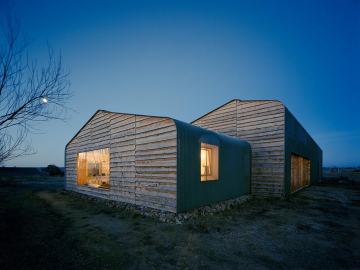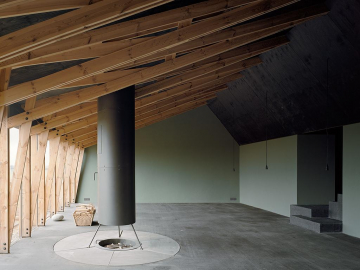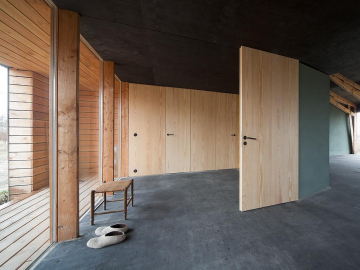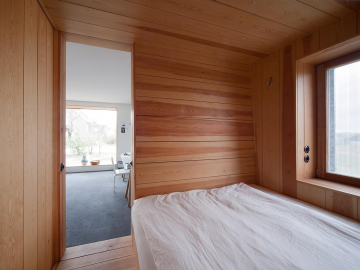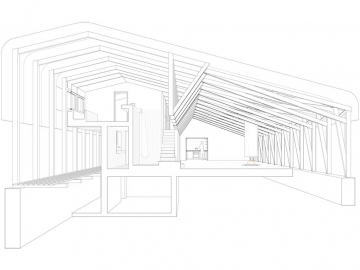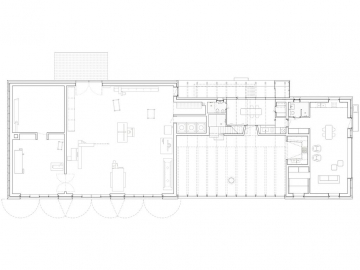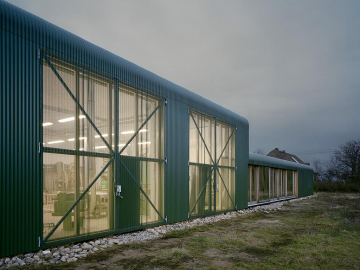Werkhaus Schütze
Within the calm, undulating landscape of Gerswalde in Uckermark, northeast Berlin a new work shop houses not only the designs of Gerhard Schütze, but also the home of their creator too. It has now been partly rebuilt and reconstructed for the product designer and carpenter Gerhard Schütze, transforming it into a functional and coherent balance of home, workshop and showroom aptly named Werkhaus.
The house was originally built in 1987 at Gerswalde in the Uckermark, northeast Berlin as a metal workshop and staff facilities for the local agricultural cooperative, LPG (Landwirtschaftliche Produktionsgenossenschaft). The transformation into the "Werkhaus" brings together the three volumes: a workshop, a showroom, and a one-story living area. The workshop is the only part in the entire building that reuses the original existing construction.
The entire building is covered with a new, green corrugated metal skin, that rounds off at the eaves, softly transitioning between the roof and exterior walls, whilst it gently blends the house into the flat hills of Uckermark. The windows and factory store that bring sunlight into the interior and share views towards the gently undulating glaciated landscape beyond have perforated metal sheets in front allowing them to almost disappear to the outside, seamlessly avoiding an interruption to the skin and shape of the building. Some of these windows (including the big gates of the workshop) open via a steel constructed mechanism. The gable ends, are covered with a weathered larch, characterized by the surrounding barns.
The centrally located showroom mediates in height and shape between the living area and the workshop, coherently relating the two together. Here, the generously glazed room shares the view upon the landscape. In the two-storey part of the house the offices and lounges are located. The constructive truss form here at the same time frame for the glazing of the showroom, and wear the black stained plywood ceiling, forming a cavernous space together with the raw untreated mastic asphalt floor. Large space-forming wooden trusses frame the floor to ceiling glazing and is housed within a black stained plywood ceiling. The character of the crude elements in the middle of the showroom with the sunken fireplace, as well as the rock-like steps in to the chambers upstairs create a reminiscently archaic quality to the space. It is through this considered distillation and abstraction of the necessary functional living/working space that a sense of luxury can emerge.
The contrast between raw materials and fine, hand made finishes and details is celebrated throughout the entire interior design. This is most prominent in the sleep-alcove of the bedroom, which is fully lined inside with solid pine boards secured by wooden pegs on the substructure with minimal joints. These boards are also found in the lounge, the kitchen and the workshop as well as to disguise access to other areas in the building, all the while tying the three contrasting uses for the building together.
In all wall and ceiling areas close attention was paid in creating sufficient ventilation due to the seamless transition between the outer wall and roof.
The air flow in the base area and the windows is discharged upwards through a unilateral ventilation ridge.
The entire building is heated by a wood chip-burner, that uses the wood chip by-products of wood processing in carpentry / workshop directly for heat supply.

